Royal tombs
Since William of Orange, almost all members of the Dutch royal family have been buried in the Nieuwe Kerk in Delft. The tombs are not open to the public. What exactly they look like is still, therefore, generally unknown.
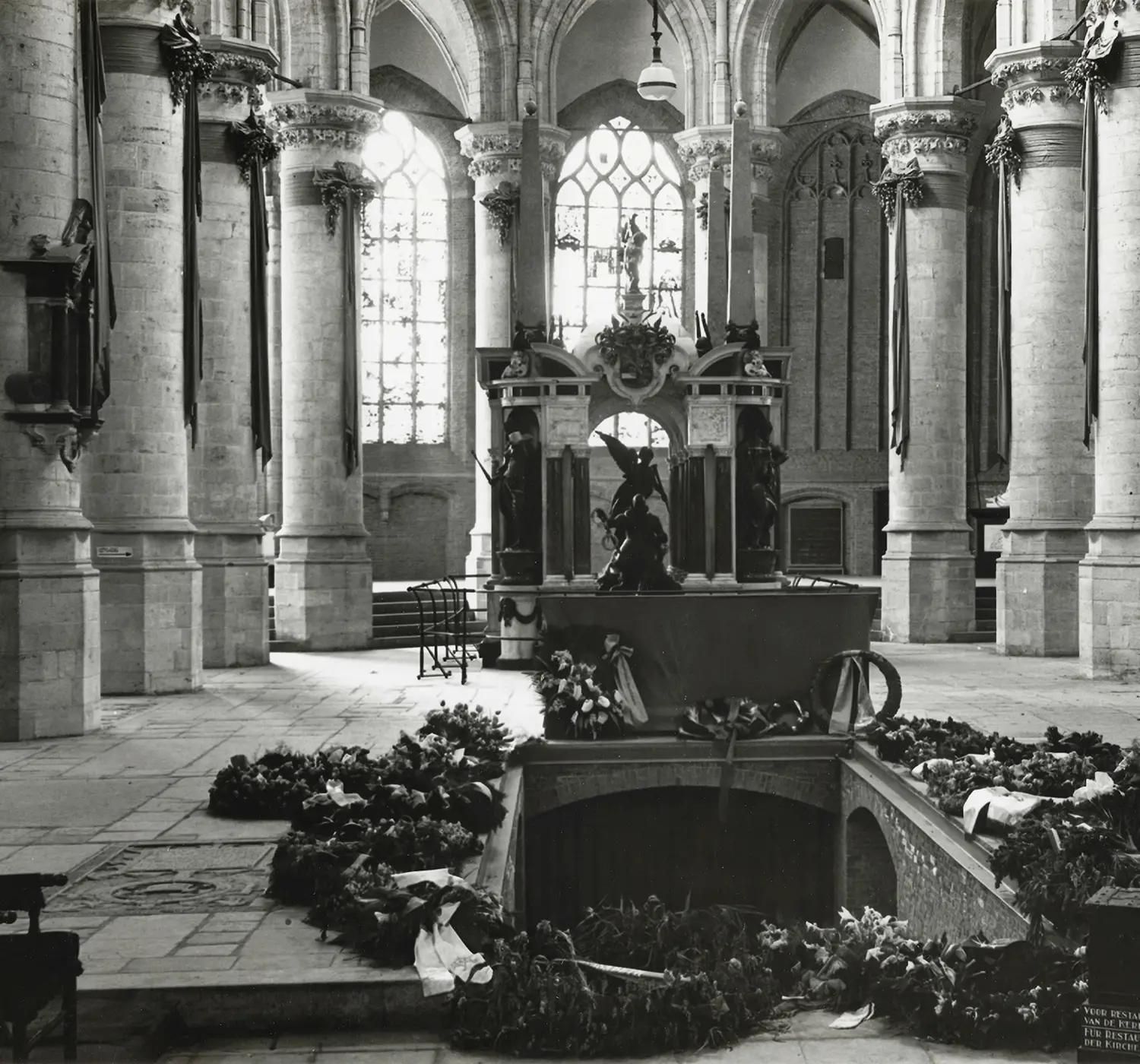
Secretive
A total of forty-six sets of remains currently lie in the crypts. The crypts are not open to the public because of the privacy of the Royal Family and because the cellars do not lend themselves to it. The crypt’s key keeper is the mayor of Delft.
Unknown coffins
The royal tomb consists of two parts. The oldest part is directly below the mausoleum of William of Orange. Here lie the remains of the Father of the Fatherland himself and ten of his closest relatives. However, there are also three small coffins labelled 'unknown'. Presumably, two of these contain stillborn grandchildren of William of Orange. However, this is not certain.
Groundwater
The second part of the royal tombs is a lot larger and lies several metres to the rear. This cellar was inaugurated in 1822. During the French Revolution, the crypt was not looted, unlike those of the Nassaus in Leeuwarden. However, the crypt was damaged by rising groundwater when fuel oil from the Delft pumping stations ran out towards the end of World War II.
Heavy stone
Over the years, the vaults were rebuilt several times. Queen Wilhelmina last had a heavy natural stone slab with four copper rings in the corners placed on the entrance to the tombs. This stone bears the coat of arms of the Orange-Nassau family and in Latin: 'Here William I, the Father of the Fatherland, expects the resurrection'.

Expansion
Following a major renovation, an extension to the royal tombs was completed. This was completed in 2022. This floor plan from the NOS shows how the different parts were built out.
Discover more about the House of Orange
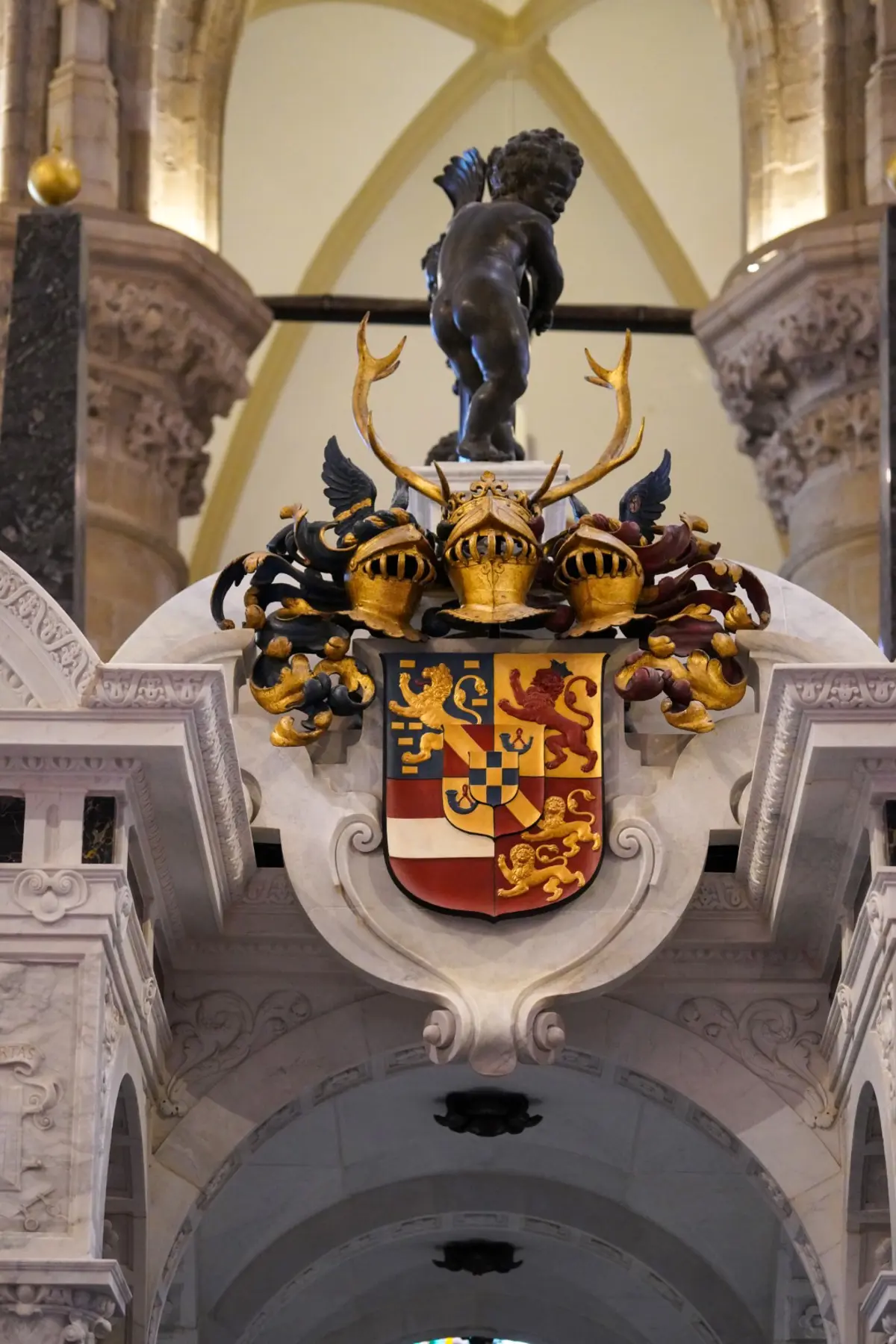
Royal house
Delft en het Nederlandse Koninklijk Huis zijn onlosmakelijk met elkaar verbonden. Sinds Willem van Oranje worden bijna alle leden daarvan bijgezet in de koninklijke grafkelders in de Nieuwe Kerk. In 2002 en 2004 nog, vonden drie leden van de Koninklijke Familie hier hun laatste rustplaats.
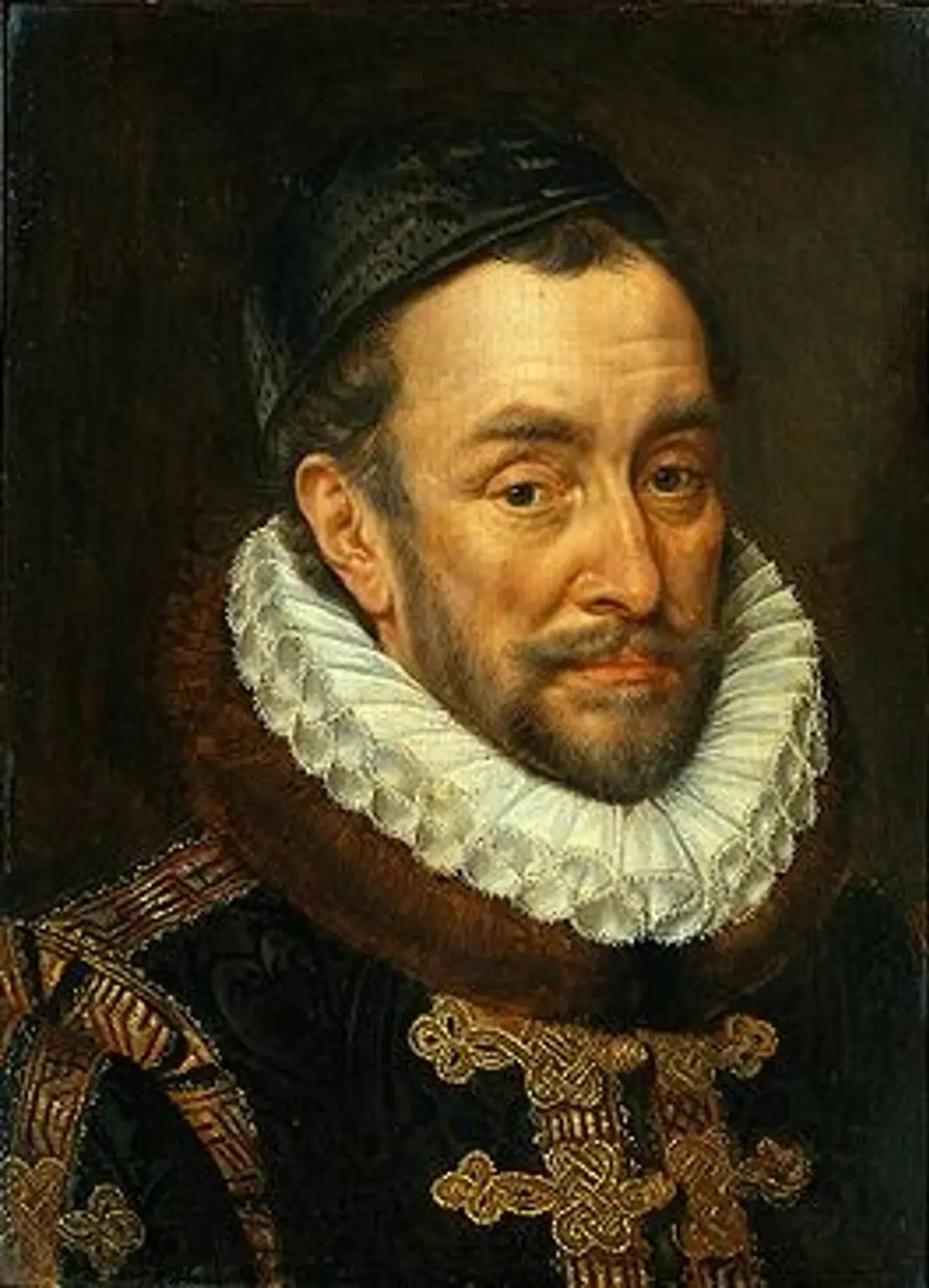
William of Orange
William of Orange; the 'Father of the Fatherland'. That his name was associated with Delft and the Nieuwe Kerk is purely coincidental. After his sudden death in the Prinsenhof in Delft, his family tomb in Breda was inaccessible....

Tomb of William of Orange
The mausoleum of William of Orange is perhaps the Nieuwe Kerk's biggest crowd puller. The artwork contains a lot of fascinating symbolism and shows great respect for the 'Father of the Fatherland'.
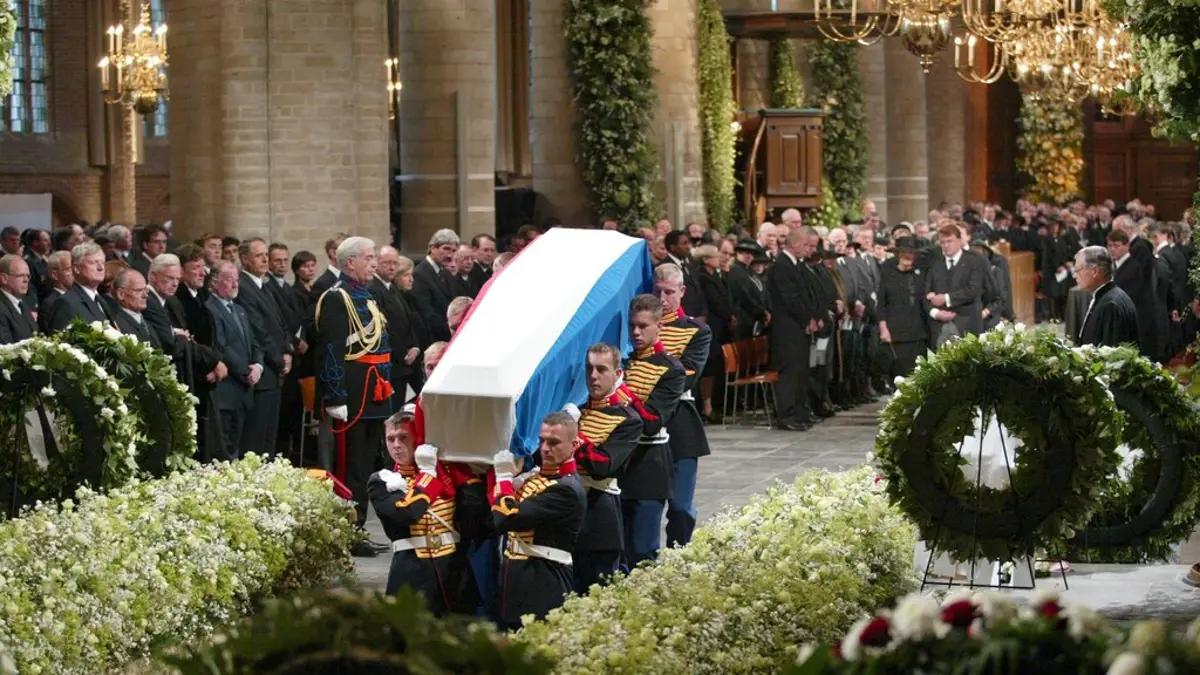
Interments of the Oranges
Since William of Orange, the founding father of the Van Oranje-Nassau family, almost all deceased members of the Dutch royal family have been interred in the royal tombs of the Nieuwe Kerk.
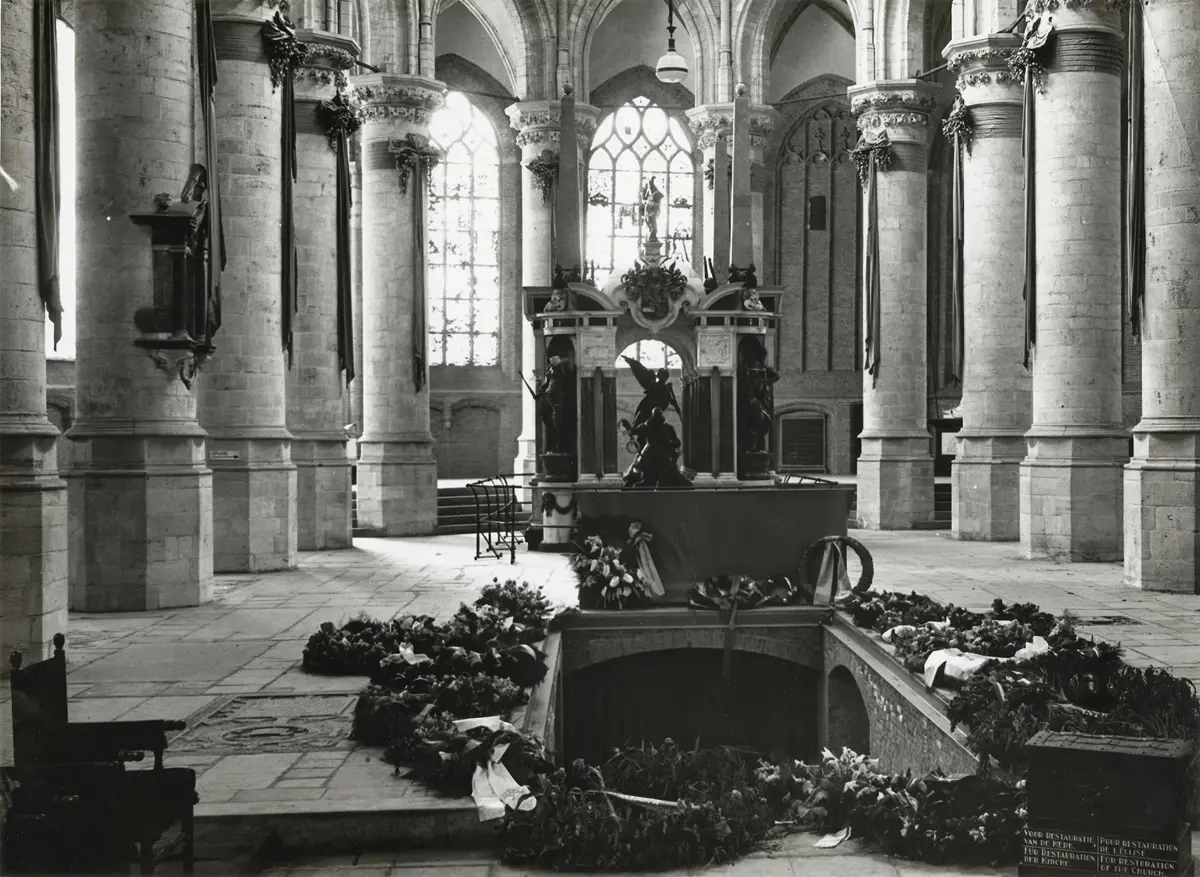
Royal tombs
Since William of Orange, almost all members of the Dutch royal family have been buried in the Nieuwe Kerk in Delft. The tombs are not open to the public. What exactly they look like is still, therefore, generally unknown.

Recent burials
As recently as 2002 and 2004, successively Prince Claus, Queen Juliana and Prince Bernhard found their final resting place in Delft's Nieuwe Kerk.
